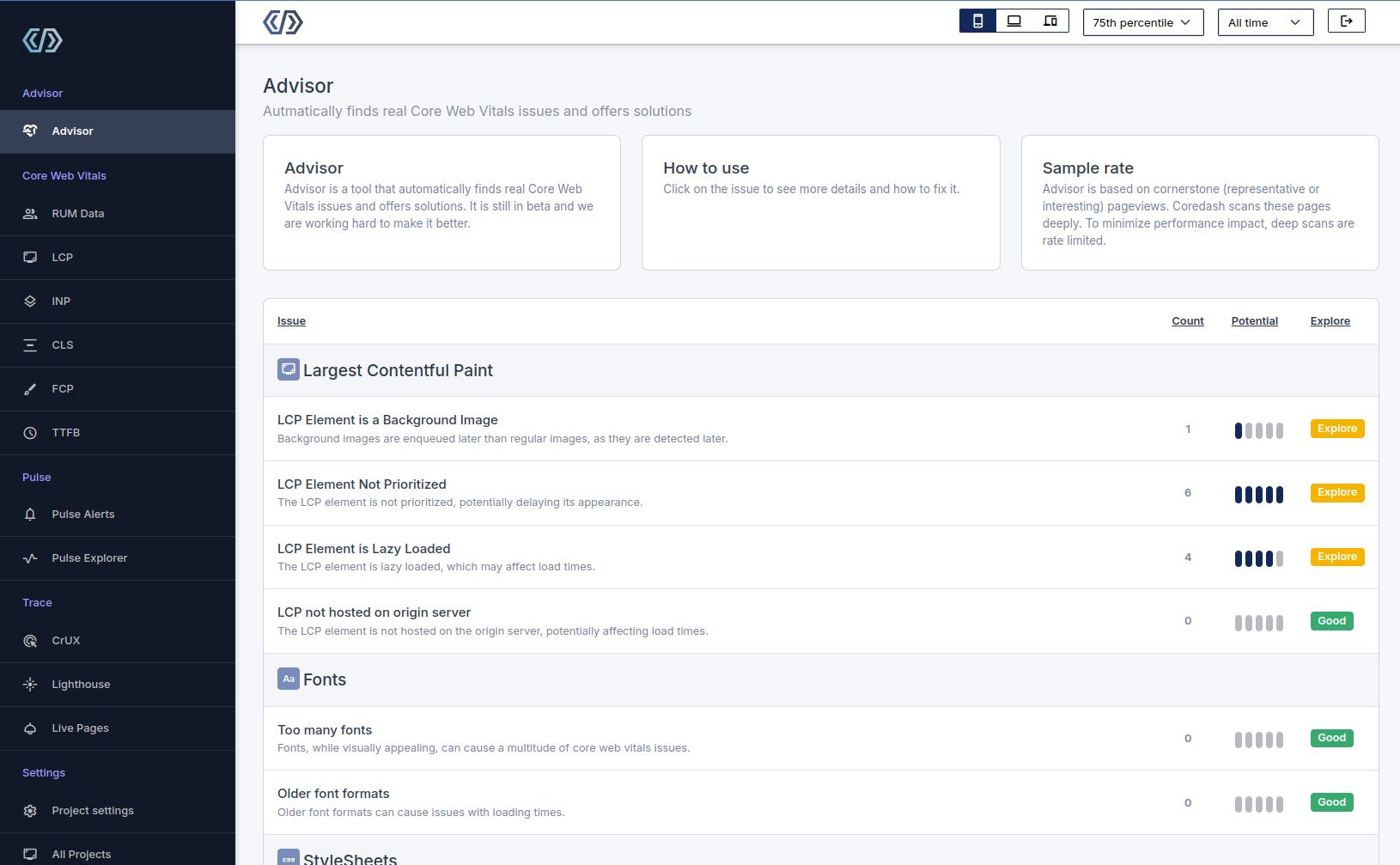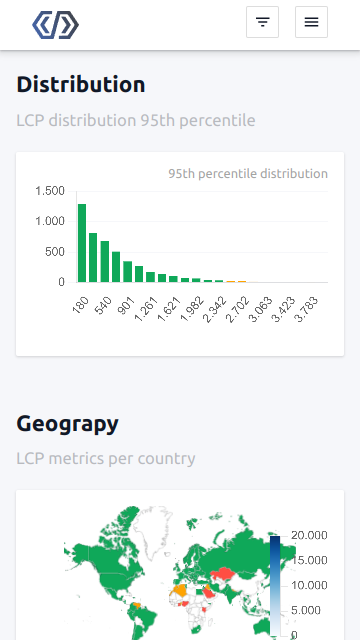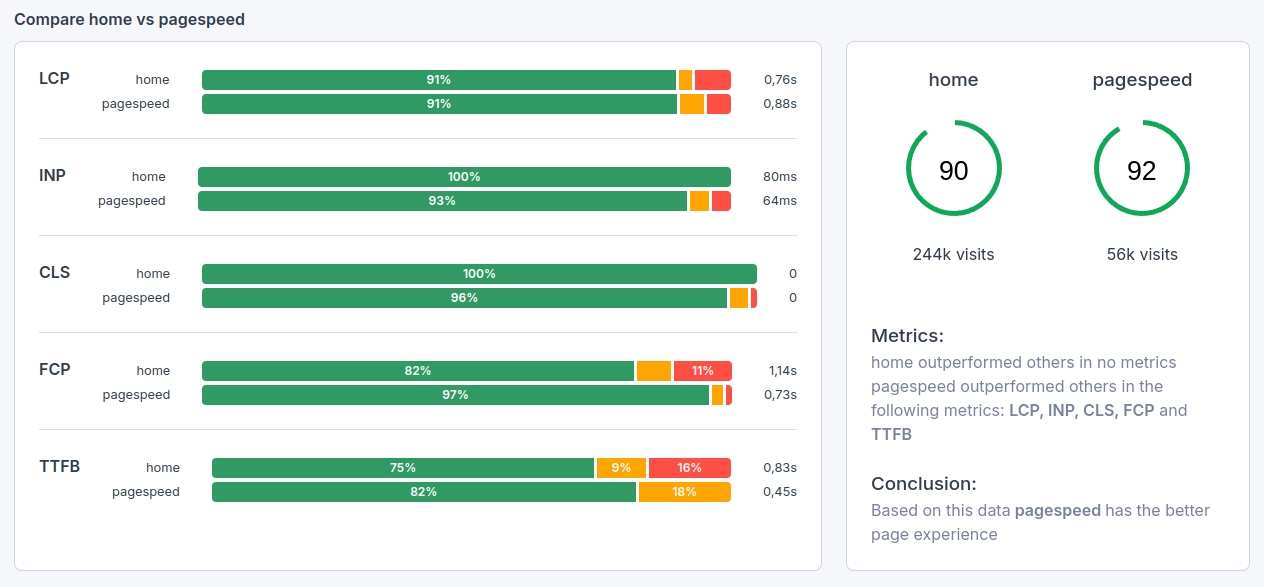CoreDash Advanced Setup
Get started with Core/Dash in minutes.


Trusted by market leaders
Advanced Setup Options for Coredash
Coredash provides advanced configuration options to tailor tracking to specific use cases. These options can optimize how Core Web Vitals are monitored across various scenarios, including tagging first (uncached) pageviews, defining page labels, managing A/B tests, and tracking logged-in states.
First Pageview Tracking
First PageView tracking is important because first pageviews are different from subsequent pageviews. The visitors browser has no cached files it can access quickly and extra DNS lookup or setting up a secure connection between the browser and the server will take more time.
First pageviews obviously make the first impression and are also relevant new traffic sources like ad traffic. That is why traciking and filtering new visitors is important for your site.
Coredash offers flexibility in how the first pageview is tracked. This setting determines whether the initial visit is recorded and how data is stored.

Options:
- Enabled (via Cookies): Tracks the first pageview using browser cookies. This option is compatible with most scenarios and ensures data is retained between sessions.
- Enabled (via Localstorage): Tracks the first pageview using local storage. This method offers a more modern approach, particularly for single-page applications (SPAs).
- Disabled: Disables first pageview tracking. Use this option if initial pageviews are irrelevant or covered by other tracking methods.
Page Labels
Page Labels are a powerful tool in CoreDash that can help you easily optimize different parts of your website. Assigning page labels allows for comparing, granular reporting and segmentation of performance metrics.

Define a page label in the JavaScript global scope before Coredash initializes:
window.__CWVL = 'mypagelabel';Replace 'mypagelabel' with a unique identifier for the page. This label will appear in Coredash reports for easier identification.
A/B Tests
When running A/B tests, track performance metrics for different versions of a page by assigning a test version identifier. Define the test version as follows:
window.__CWAB = 'my page version'; Replace 'my page version' with the identifier for the current test variant. This ensures that Core Web Vitals data is tied to specific versions, simplifying comparison between variants.
Track Logged-In Users (anonymously!)
Logged in user status is a common performance bottleneck metric. It is not the logged in status per-se as much as logged in users often cannot receive a server side cached version of a web page. As a consequence the web page needs to be generated on each request often leading to high Largest Contentful Paint metrics.
That is why CoreDash RUM tracking let you differentiate performance metrics based on user authentication state by defining logged-in or logged-out status:
- For logged-in users, set:
window.__CWLI = 1; window.__CWLI = 0; This configuration enables detailed analysis of performance metrics for distinct user groups.
These advanced options provide the flexibility needed to align Coredash tracking with specific organizational requirements. Configure these settings carefully to ensure accurate and meaningful data collection.

